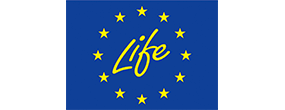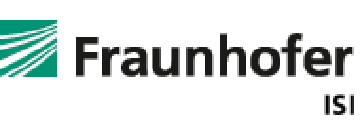Overview
Between 2010 and 2022, Kosovo’s energy consumption grew until 2019, but stabilized or slightly decreased by 2022 due to improved efficiency and changing consumption patterns, influenced by post-pandemic behaviors and energy efficiency measures. The Residential sector remained the largest energy consumer, followed by Transport and Industry, with Agriculture as the smallest contributor. Energy efficiency improved steadily, as reflected in declining primary and final energy intensities. Primary intensity dropped from 0.55 to 0.36 koe/EUR, and final intensity from 0.26 to 0.20 koe/EUR. Despite a slight increase in total energy supply from 2.5 to 2.66 Mtoe, efficiency measures helped balance overall demand with minimal supply growth.
Figure 1: Final energy consumption by sector (with climatic corrections)
Source: ODYSSEEOverall, final energy consumption increased from 2010 to 2019, then remained relatively stable or slightly decreased by 2022. The Residential sector consistently accounted for the largest share of energy use, followed by Transport and Industry. Notably, the Services and non-specified category showed a slight increase over time, while Agriculture remained the smallest contributor. The increase in total consumption from 2010 to 2019 reflects economic growth or population changes, whereas the stabilization or minor decline between 2019 and 2022 indicates improvements in efficiency and shifts in consumption patterns, possibly influenced by post-pandemic behaviors and energy efficiency measures. The data highlights the dominant role of the Residential sector and the relatively stable structure of sectoral consumption over the decade.
Figure 2: Primary and final intensities (with climatic corrections)
Source: ODYSSEEThe graph shows that both primary and final energy intensities in Kosovo steadily declined between 2010 and 2022, indicating improved energy efficiency over time. Primary intensity decreased from around 0.55 koe/EUR in 2010 to roughly 0.36 in 2022, while final intensity dropped from about 0.26 to 0.20 koe/EUR. Although the overall trend is downward, both indicators display minor fluctuations, particularly between 2014 and 2021. The gap between primary and final intensities, representing energy transformation and distribution losses, remains relatively consistent throughout the period.
Figure 3: Final intensity by sector
Source: ODYSSEEFinal energy intensity trends in Kosovo from 2010 to 2022 varied significantly across sectors. Agriculture showed the most volatility, with a sharp rise between 2011 and 2013—peaking at nearly double the 2010 level—followed by a steep decline and ongoing fluctuations. Despite this, it ended the period notably above the 2010 baseline. The Services sector followed a more stable path, with small increases over time that suggest a gradual rise in energy consumption relative to output. In contrast, Industry demonstrated a steady decrease in final energy intensity throughout the period, reflecting consistent improvements in efficiency. This divergence highlights that while some sectors have made progress in decoupling energy use from economic growth, others remain more variable or energy-intensive.
Figure 4: Main drivers of the total energy supply variation
Source: ODYSSEEBetween 2010 and 2022, Kosovo’s total energy supply increased from 2.5 to 2.66 (Mtoe), marking a net rise of 0.16 Mtoe. The main factor behind this growth was the increase in final energy consumption, which added 0.3 Mtoe to the total supply. On the other hand, energy consumption in the power sector decreased by 0.21 Mtoe during this period. This drop could be attributed to improved efficiency in electricity generation and a shift in fuel sources. Other transformations within the energy system—such as refining losses or conversion processes—contributed an additional 0.04 Mtoe to the total supply. Non-energy uses, including energy products used as raw materials, added a minor 0.02 Mtoe. Despite fluctuations in specific components, the overall energy supply in Kosovo remained relatively stable with only a slight upward trend. The data suggests that while energy demand grew, especially among final consumers, some of this increase was offset by gains in efficiency or reductions in other sectors, highlighting a balancing dynamic in the country’s energy system over the 12-year span.
Table 1: Sample of cross-cutting measures
| Measures | NECP measures | Description | Expected savings, impact evaluation | More information available |
|---|---|---|---|---|
| Ministry of Economy EE measures/subsidies for households (2022) | No | Implementation of energy efficiency heating measures |
Buildings
Between 2010 and 2019, Kosovo's energy consumption increased, especially in the residential sector, while the services sector saw more moderate growth. From 2019 to 2022, total energy use decreased slightly, mainly due to reduced residential consumption, driven by improved insulation, better heating technologies, and changing behaviors, particularly after the COVID-19 pandemic. Household electricity use per capita rose sharply from 2018, reflecting greater reliance on electrical appliances and electrified heating. Energy consumption for space heating peaked in 2019 but dropped significantly after 2020, due to better insulation, energy efficiency efforts, and higher energy prices. A slight increase in energy use for cooling was also noted, possibly due to warmer summers.
Figure 5: Final energy consumption in buildings (with climatic corrections)
Source: ODYSSEEBetween 2010 and 2019, Kosovo experienced a noticeable increase in energy consumption in buildings, primarily driven by the residential sector. By contrast, the services sector saw a more moderate increase. However, between 2019 and 2022, there is a slight decrease in total consumption, largely due to a reduction in residential energy use. The services sector remained relatively stable during this period. This shift indicates growing awareness of energy efficiency, the adoption of better insulation and heating technologies, changing household behavior, especially following the COVID-19 pandemic, which altered daily routines and energy usage patterns.
Figure 6: Energy and electricity consumption in households per capita (with climatic corrections)
Source: ODYSSEEOver the 12-year period, household electricity consumption per capita increased more sharply than total energy use, particularly from 2018 onward. This suggests a growing dependence on electricity in daily life—potentially due to an expansion of electrical appliances, digital technologies, and the electrification of heating systems. The steep rise in 2021 reflects the impact of the COVID-19 pandemic. By contrast, in 2022, total household energy consumption dropped noticeably, even as electricity use remained relatively elevated.
Figure 7: Energy consumption per capita for space heating in households (with climatic corrections)
Source: ODYSSEEFrom 2017 to 2019, energy consumption for space heating per capita in Kosovo increased, peaking in 2019 at just above 0.24 toe/cap. This rise reflects colder winters during those years, increased demand for indoor comfort, growing access to heating technologies in households. However, from 2020 onwards, the trend shifts downward. Although 2020 and 2021 show a slight decline, the most significant drop occurs in 2022, when heating energy consumption falls to its lowest level in the observed period—around 0.19 toe/cap. This reduction could be attributed to a combination of improved building insulation, increased energy efficiency awareness, and rising energy prices prompting households to reduce consumption.
Figure 8: Energy consumption per capita by end-use in households (except space heating)
Source: ODYSSEEIn the structure of energy consumption per capita by end-use in households (except space heating) most of the energy is used for electrical appliances and water heating, followed by cooking. A slight increase of energy consumption for air cooling can be noticed, for the period 2017-2022, which may be connected with climate conditions (warmer summers).
Table 2: Sample of policies and measures implemented in the building sector
| Measures | NECP measures | Description | Expected savings, impact evaluation | More information available |
|---|---|---|---|---|
| Municipal Energy Efficiency Project (MEEP) | No | The Municipal Energy Efficiency Project (MEEP), supported by the World Bank, the European Union, and the Government of Kosovo, is an initiative aimed at improving energy efficiency in municipal facilities across Kosovo. Managed by the Kosovo Energy Efficiency Fund (KEEF), the project supported municipalities in reducing energy consumption in public buildings and street lighting systems. Participating municipalities received comprehensive services from KEEF, starting with energy audits and extending through to the implementation of energy-saving measures. These measures included the insulation of walls and attics, replacement of windows and doors, upgrading of heating and ventilation systems, and the modernization of lighting and street lighting. The goal was to create more energy-efficient municipal infrastructure, contributing to reduced energy use and long-term savings. | Link | |
| IMPLEMENTATION OF ENERGY EFFICIENCY MEASURES FOR INDIVIDUAL RESIDENTIAL HOUSES | No | The Emergency Energy Efficiency Measures for Individual Residential Houses project, launched by the Kosovo Energy Efficiency Fund (KEEF), aimed to improve energy savings and the well-being of individuals. This initiative was supported by the European Union under the IPA Energy Support Package, coordinated by the Government of Kosovo and implemented by KEEF. KEEF invited homeowners to express their interest in applying for subsidies to implement energy efficiency measures in their homes. The project was designed to help reduce energy consumption through specific energy-saving interventions. The eligible energy efficiency measures included: Thermal insulation of external walls Thermal insulation of the roof Replacement of external windows and doors These measures were intended to enhance energy conservation and improve living conditions in individual homes across Kosovo. | Link |
Transport
The transport sector is dominated by road transport, covering almost 99% of total consumption in 2010 and 97% in 2022. Rail transport in Kosovo remains underdeveloped and has seen minimal use, maintaining consistently low levels from 2010 to 2022.
Figure 9: Transport energy consumption by mode
Source: ODYSSEEIndustry
In 2022, final energy consumption in the industrial sector reached 0.30 Mtoe, marking a 7.14% increase compared to 2010. A significant portion of this consumption—nearly half—was concentrated in the other branches sector, followed by the non-metallic minerals sector.





